Keynote Presentation Script from SPE Workshop,Abu Dhabi, 24th May 2022
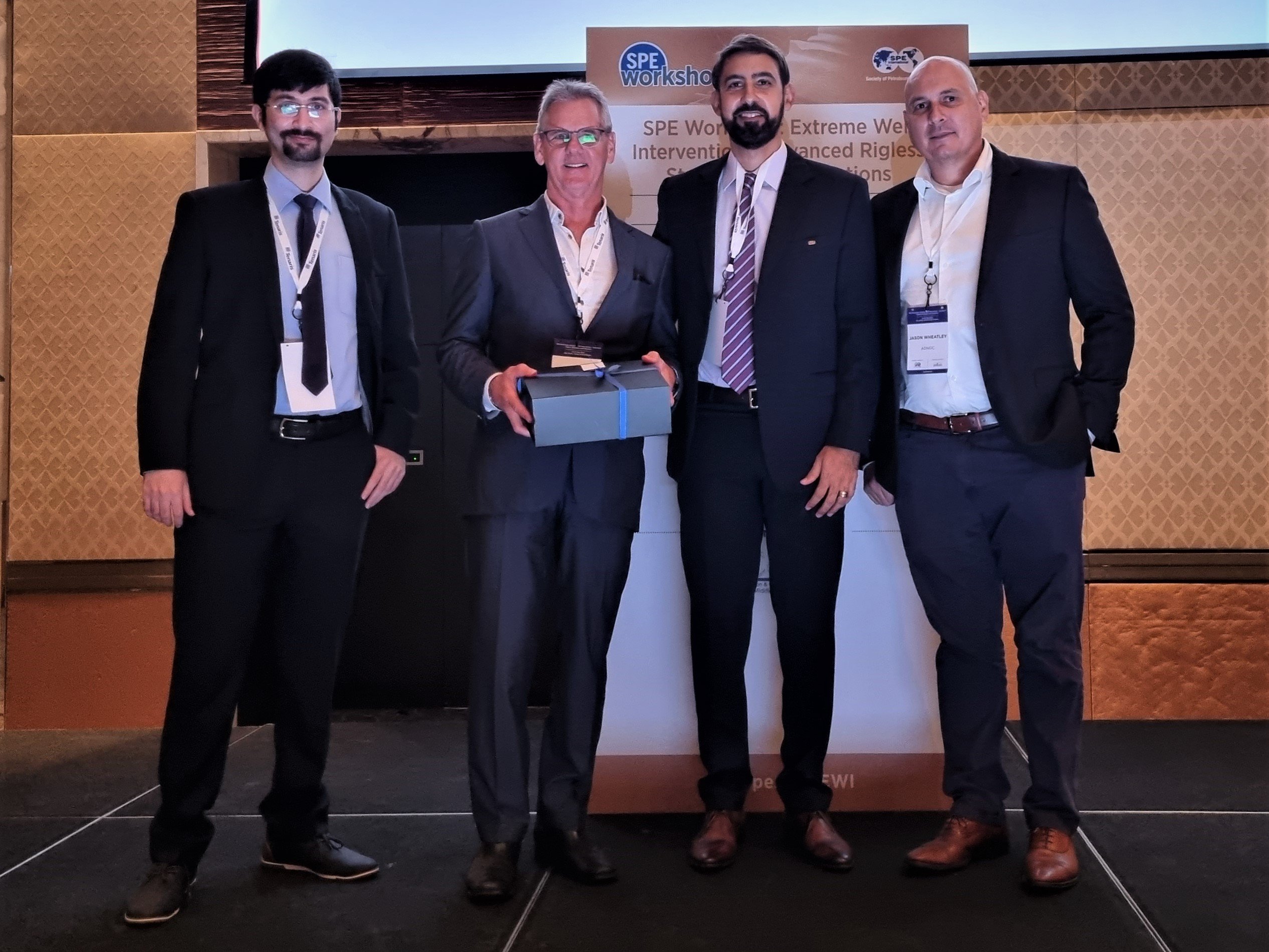
As the world emerges from the pandemic and starts to get back to business there is an expectation of increased demand for energy for which oil and gas will continue to play a hugely important role, both in the near term and as we move forward through the energy transition. The aspects listed below are as relevant to securing energy supply as they are to the underlying efforts to lower carbon emissions. Recognition that the oil and gas industry has a critical part to play as we progress through the energy transition is there – a part to play in which Well Intervention has and will have an increasingly important role.
- Challenging reservoirs
- Unlocking reserves previously beyond reach
- Economic drivers to maximise the potential
- Substantial advancements in well intervention technologies
- Redevelop mature fields
- Cost-effective strategy to enhance oil recovery
- Innovation and research and development in the well intervention arena
For my keynote I have chosen to give a high-level overview of the advancements and innovations in Well Intervention technologies that are positively impacting many of these aspects and more – the technology trends being seen across the intervention sector, the value being delivered, and the growing expectations being set. I will not attempt to cover each and every advancement and the related innovations I see, but I will touch on some examples of these in relation to the themes shown – new measurements, new physics application, well access, scope combinability, topside engineering, and the broad aspect of digitalization.
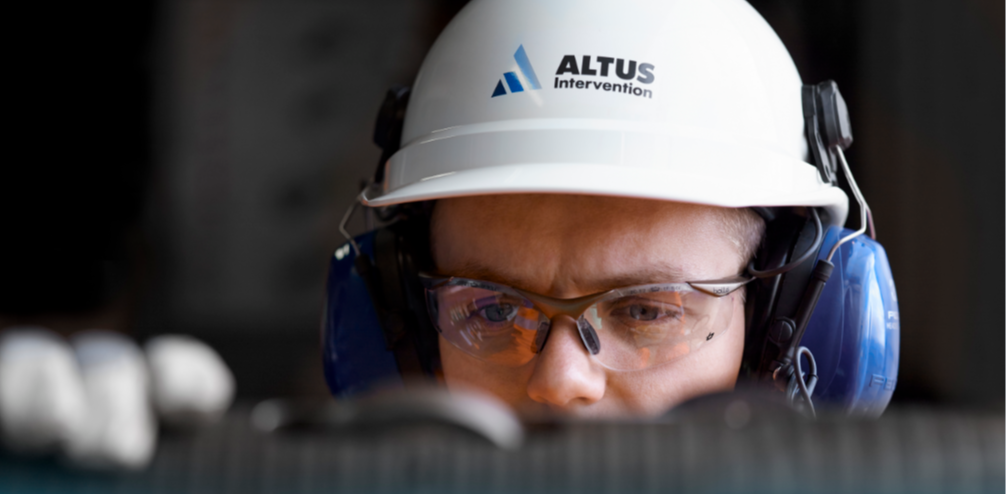
A full and thorough understanding of the required job scope and its safe and efficient execution has always been the goal, and it remains of paramount importance across all phases of oilfield operations. In the past, the ability to be consistently effective and predictable across Well Intervention activities has lagged somewhat behind that of Drilling and Completions. This gap however has now closed significantly as the Well Intervention business has matured, and as the associated technology developments specific to this field have advanced.
Particularly during the recent industry downturns, there has been a lot of focus on reducing the cost of interventions. Pricing reductions aside, time and cost efficiency of operational execution has been high on the agenda, as has the need for an increase in the mission certainty – of both specific intervention tasks and of the broader, multi-task full operation objective. Improvements on these fronts have been delivered through the application of new technologies as well as tailored tool designs and operational procedures, coupled with diligent pre-job planning, thorough well-intervention-on-paper exercises, and attentive System Integration Tests (SITs). Digitalization has been increasingly prevalent, also positively impacting planning, coordination, and execution while facilitating collaboration and post-job knowledge capture.
Cross-company collaboration and integrated delivery models are being increasingly applied to intervention operations, bringing many benefits including access to, and integration of, independent best-in-class technologies with improved coordination across the planning, testing, load-out and execution phases of the operation.
In addition, general downsizing – being able to execute intervention scope with less and lighter equipment, fewer logistical requirements, and a reduction in personnel has also provided considerable time and cost savings. In today’s world, sustainability and low carbon solutions have certainly come to the fore, with lighter options being further favoured. Whilst there are carbon savings being provided by improvements within intervention technologies, the biggest impact comes from scope expansion and the ability to do more with less – to execute a broader range of intervention work scope via less intrusive and lighter deployed solutions, ones that do not require a rig to execute or a full workover operation to deliver the solution.
All this in turn is enabling safer, more efficient, low carbon performance whilst delivering an increased level of predictability and assurity in achieving an intervention’s objective – be that a diagnostics or remedial goal for maintaining the well’s integrity, maximizing its production and recovery, or executing its secure end-of-life plug and abandonment.
The Well Intervention business has been no stranger to new technology developments and applications over the years, however, the number of technology players, the level of activity, and the sophistication and innovation across the many technology solutions being brought to the intervention space has increased considerably in recent years. High-level development trends are a rich mix of new and additional measurements, advancements in downhole tooling, improvements in deployment systems across slickline wire, electric line cabling, the use of carbon composite materials and in coil tubing design. Developments in topside equipment is also an active area, particularly for offshore operations and P&A. Additionally, there is an increase in tool combinability and integration, both within a single provider and across third-party products. Furthermore, an increase in tool instrumentation and sensors combined with high bandwidth telemetry communication systems is providing an abundance of rich data which is improving operational capability, efficiency, and mission certainty. Data-driven decisions are leading to efficiencies in task execution, with machine learning already in use and AI making an entry.
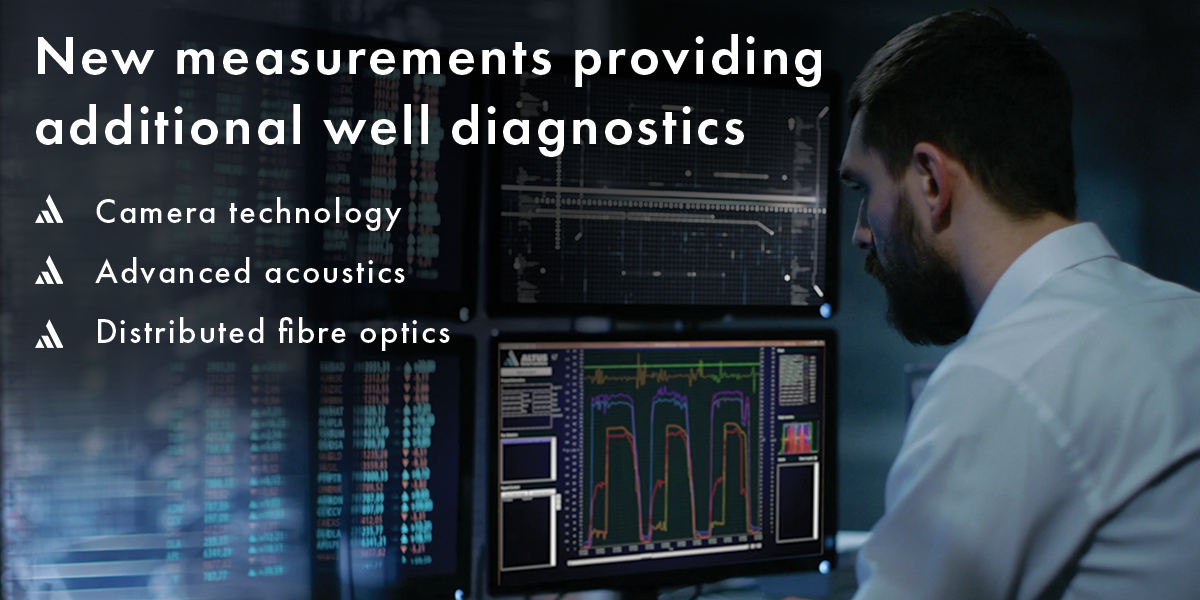
New Measurements
New measurements available on slickline, e-line, and coiled tubing are providing a richer level of diagnostics resulting in increased clarity and understanding of wellbore health and dynamics. For example, image sensor technologies for visual logging using downhole cameras have grown to become a standard offering within the intervention toolkit, with multi-direction viewing solutions (both down and side view) now available. Recent developments include integrated dimension analytics, offering precise measurements on shape and orientation bringing yet further clarity to the wellbore challenge being diagnosed. Another example is the use of advanced acoustics, now enabling through pipe measurements for the determination of flow behind casing, and B annulus cement integrity evaluation. The application of fibre optics used for distributed temperature or acoustic sensing is providing production or injection flow profiling across the entire length of the wellbore, or leak detection back to origin.

New physics application
There are a number of products and technologies which have recently surfaced leveraging physics which is new to the Well Intervention market. Examples of these include: high powered hydraulic impulse sequence technology as an option for wellbore scale removal; Bismuth alloy plugs and epoxy sealants for P&A or well integrity remediation, and; acoustic data transmission used in conjunction with plugs to provide cross-barrier pressure and temperature monitoring, transmitting data from below the plug to a sensor probe positioned above using near-proximity telemetry via the pipe or formation – providing barrier integrity verification and in-flow leak tests.
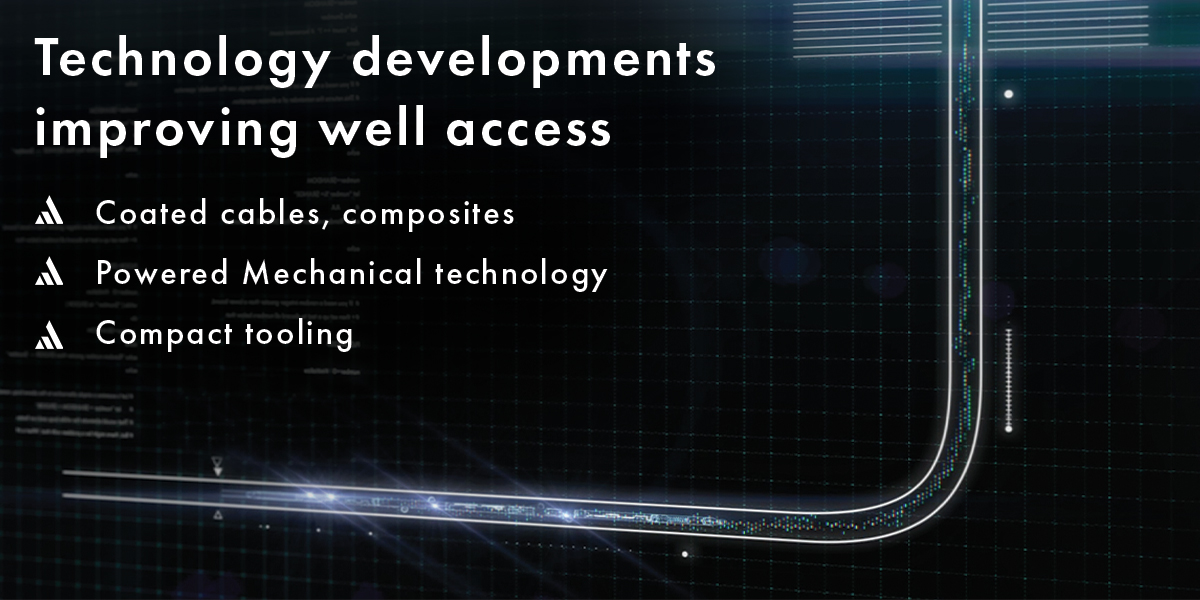
Technology developments
Well access for intervention operations can often be hindered by surface infrastructure. This is particularly so in offshore operations, be that from rig-up height, deck space or loading limitations, or by the actual well itself – its internal dimensions, its trajectories, or tortuosity. In some circumstances it can be a combination of all. Being able to get the required intervention tooling to task depth has been significantly improved through innovations in deployment systems and in the tooling itself. Coated slickline cables are now providing real-time telemetry bringing improved task visualization to slickline operations. Coated electric-line cables are enabling increased long lateral extended reach access from reduced friction drag. This coating is also providing additional conveyance efficiencies as a result of the ability to utilize greaseless or more efficient pressure control systems. Another low friction solution is coming from the use of carbon composite spoolable rods incorporating communication and power lines. Aside from being strong yet lightweight, this brings a level of push-ability normally reserved to coiled tubing.
These deployment benefits are being combined with advances in Tractor Conveyance technology. Faster, more powerful and highly instrumented tractors are increasing measured depth access in long laterals but also doing so faster and more efficiently due to their real-time, in-well optimization of conveyance speed and force. Tractors are also being fully integrated via a common tool architecture with a growing suite of powered mechanical tools. These too are highly instrumented and capable of a wider, tougher task range, being used for wellbore cleanout, completion manipulation and well re-access and recovery services. The improved and expanded capability of this growing electric line deployed technology suite is providing lighter, less intrusive solutions with an increased level of dexterity and accuracy to tasks previously carried out by heavier intervention options, enabling a level of intervention work scope execution on e-line that was previously unthinkable. Examples of this are metal milling of large, high-strength steel completion components, or large volume wellbore debris cleanout operations involving debris dislodge, collection and removal. In other developments, common tool architecture enabling elements of component sharing and the application of Micro-electromechanical systems or MEMS to some intervention tools is facilitating string compaction, hence shorter multi-component intervention toolstring solutions.
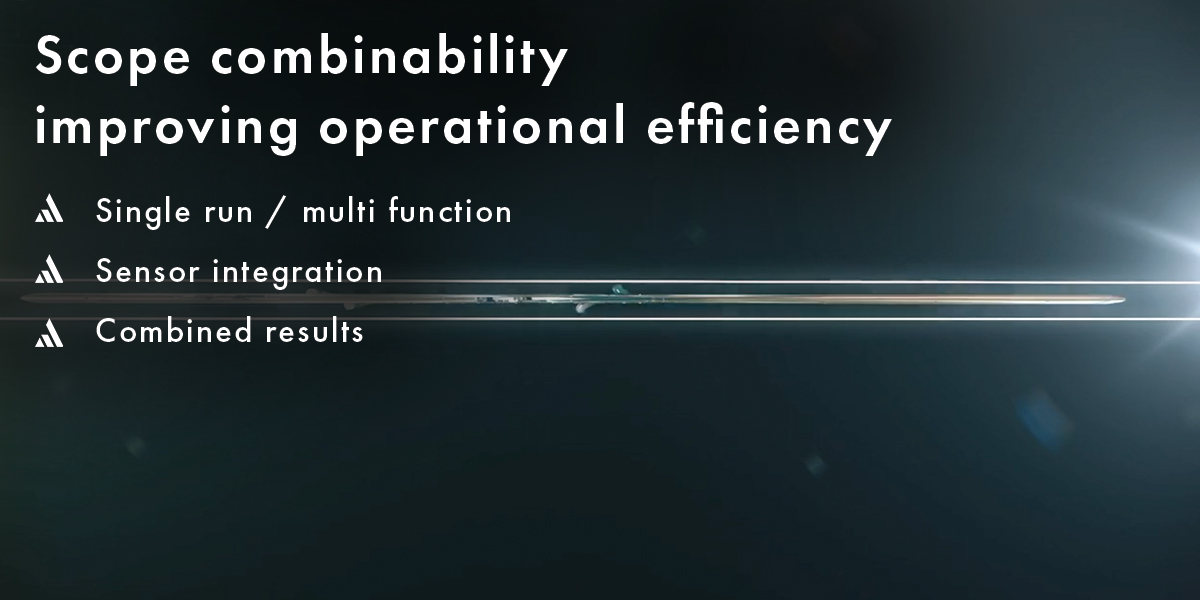
Scope combinability
Combining technologies for operational efficiency is not new to logging, with the development forty-plus years ago of the triple combo toolstring to acquire porosity, density, and resistivity data in a single run. That said, combining several powered mechanical services into a single run is a new development and a growing area of focus. A good example of this is a set plug–punch tubing – cut tubing operation executed via one run-in-hole. This task sequence is a common and recuring requirement of P&A scope, where efficiency gains per well are further capitalised upon during multi-well operations. Combining diagnostic and mechanical intervention tools to enable a single run “inspect-act-verify” task sequence is another area of attention. Advancements in independent tool integration via common tool architecture is aiding multiple tool combinability and in turn further facilitating the execution of such single run / multi-function operations.
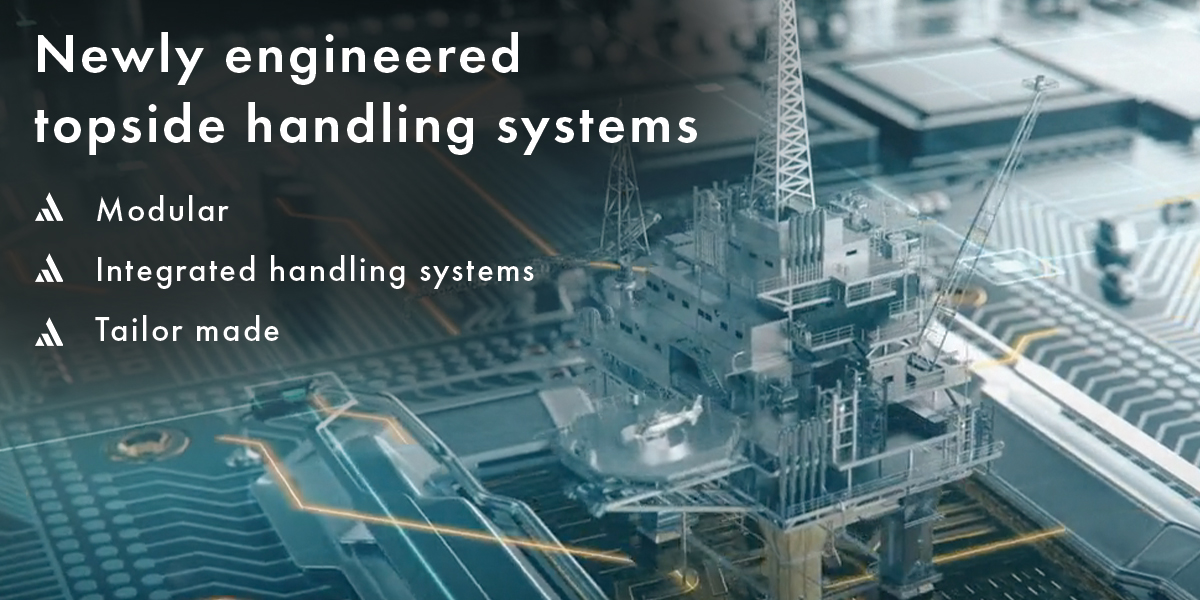
Topside handling systems
Topside handling is another area where we are seeing active innovation, particularly offshore where operation costs are generally higher, space is more limited, and wells can be more critical e.g. subsea completion, or limited slots. Fit for purpose modular masts, lifting or jacking frames with integrated lubricator handling and injectors have brought significant safety benefits and efficiencies to topside equipment rigging, minimizing lifts, eliminating the need for guidewires, and reducing personnel exposure. With that, rig up / down times have been reduced considerably.
Deployment units for slickline, electric line and coiled tubing are increasingly leveraging multiple sensor data. This data is being used by the units control systems to prevent failures due to incorrect equipment operation. Emergency stop activation on coiled tubing reels is one example of that. Operational parameters are also being fed back into both the modelling and the acquisition software packages, with the software making recommendations for parameter adjustments e.g. variation of in-well friction coefficients. Tying or coordinating winch movement to downhole tool movement is a further area of interest, with a level of automation already available in the market.
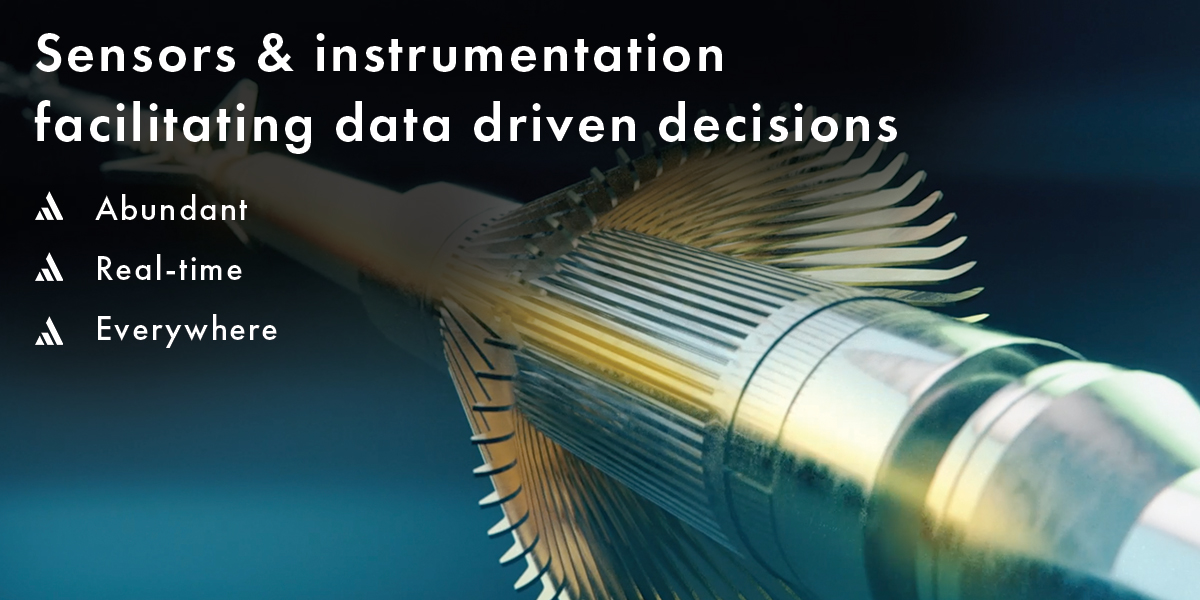
Sensors & instrumentation
The increased use of sensors incorporated within surface units and downhole tooling, coupled with high bandwidth telemetry and cloud-based connectivity is making a plethora of data available in real-time, pretty much anywhere and everywhere. This along with data integration and web-based visualization interfaces is greatly enhancing in situ tool status visibility, command, and control as well as facilitating effective data-driven decisions for Well Intervention operations both on-site and beyond. This is having a positive impact on the efficiency and quality of operations. It is also enabling POB reduction at the wellsite and aiding remote operations and collaboration across a broader reach of relevant personnel – be they from the service company conducting the operation, the operator, or the third parties involved. This digitalization is also facilitating documented databased knowledge capture, in turn used for detailed post job analysis and experience transfer for the benefit of both training and future operation design and procedures.
Conclusion
So, in closing, I’ll say Well Intervention is of the moment, and the opportunities are many. Our emergence from the pandemic coupled with the present geopolitical situation is increasing the demand for secure energy supply. In parallel, the climate crisis is calling for ever greener, lower carbon solutions. There is growing recognition that the oil and gas industry has a considerable role to play in the delivery of these. Doing more with less footprint, leveraging existing infrastructure, while rejuvenating a large portion of the significant existing idle well stock are areas that can provide an immediate and near-term contribution towards the energy supply via low carbon execution. New technologies coupled with the increasing availability of data is providing better intervention options and enabling better decisions for maintaining well integrity, optimizing well production or injectivity, and ultimately maximizing hydrocarbon recovery from the reservoir.
As we progress through the energy transition, ongoing advancement and innovations in Well Intervention technologies will continue to deliver increasingly impressive solutions for efficient, low carbon well performance and contribute towards securing the energy supply.
Stuart Murchie has had a career in the upstream Oil & Gas Industry spanning more than 35 years, holding a diverse range of international assignments encompassing general management, operations, technology, and business strategy development. Having worked in the Well Testing, Wireline, Data Services, Integrated Project Management, Slickline and Coiled Tubing sectors during his career, Stuart has been involved in the Well Intervention business over the last twelve years. He is currently the President for Middle East Asia Pacific Operations and EVP Technology Commercialization for Altus Intervention. Stuart also holds the position of Senior Chair for the global Intervention and Coiled Tubing Association (ICoTA), now in his second year in that capacity. Stuart graduated with a BSc (Hons) Degree in Mechanical Engineering from the University of Dundee, Scotland.


